Photochromism and photochromic compounds
In 1867, Fritsche discovered that yellow tetracene faded under the influence of light in air and regenerated upon heating. In 1876, Meer revealed that the potassium salt of dinitromethane changed color under light exposure. When exposed to light of a certain wavelength, these compounds undergo specific chemical reactions, resulting in changes in their absorption spectra due to structural alterations. Upon exposure to light of another wavelength, they revert to their original structural state (and color), a reversible phenomenon known as photochromism. Compounds capable of such reversible changes under light are called photochromic compounds.
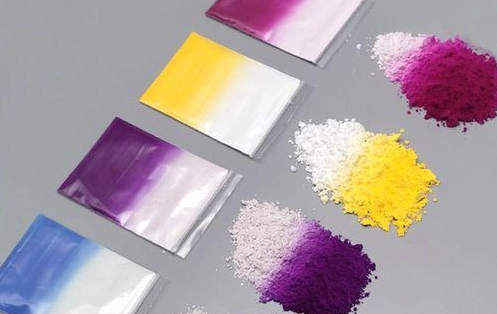
Photochromic compounds can be classified into organic and inorganic types. Organic photochromic compounds are currently the most researched and widely used. The main types include spiropyrans, spirooxazines, benzopyrans, azobenzene compounds, diarylethenes, and fulgides, etc. Among these, spiropyran compounds were the earliest discovered and most extensively studied photochromic compounds. In the 1950s, Hirsh and Berg successively disclosed research results of the photochromism of spiropyran compounds. Spirooxazine compounds, known for their fast light response, good stability, and excellent fatigue resistance, are the most promising candidates for practical applications. Benzopyran compounds are characterized by their fast light response, rapid color change, and good photostability. Azobenzene compounds are typical photochromic compounds with cis-trans geometric isomerism. Diarylethene compounds exhibit excellent thermal stability, fatigue resistance, and fast light response. Fulgides, a type of dimethylsuccinic anhydride aromatic substituted compound, are among the earliest synthesized organic photochromic compounds.
Inorganic photochromic compounds mainly include various mixed-valence metal oxides doped with impurities, such as TiO₂, Nb₂O₅, Al₂O₃, ZnO₂, HfO₂ (Hf, hafnium, element 72), ThO₂ (thorium, element 90), SnO₂, Ta₂O₃ (tantalum, element 73), etc., and metal halides such as calcium iodide, calcium chloride, aluminum chloride, copper chloride, silver chloride, as well as metal salt hydrates. After over a century of research, it is known that the color changes in these compounds are due to bond cleavage, homolytic bond cleavage, proton tautomerism, cis-trans isomerism, redox reactions, and fused ring reactions. Photochromic compounds have a wide range of applications. Due to their photosensitive properties that allow them to undergo photochromism under different intensities and wavelengths of light, they can be used not only in civilian industries but also in national defense and military fields. Therefore, photochromic compounds hold significant potential and a broad market in both civilian and military applications. This paper focuses on exploring the applications of photochromic compounds in dyes and pigments.
Exploration of synthesis of photochromic reactive dyes
The research team led by Li Hongqi from the School of Chemistry and Chemical Engineering at Donghua University, in collaboration with the Taoyuan Dye Factory in Wujiang, Jiangsu, has been exploring photochromic reactive dyes in recent years. Photochromic compounds used include spiropyrans and benzospiropyrans, while the reactive groups selected are novel para-esters: p-amino-N-β-sulfatoethylsulfonylethylbenzamide and p-amino-m-sulfato-N-β-sulfatoethylsulfonylethylbenzamide. Two examples are listed below:
2.1 Synthesis of novel para-esters: p-amino-β-sulfatoethylsulfonylethylbenzamide and its sulfonated derivative
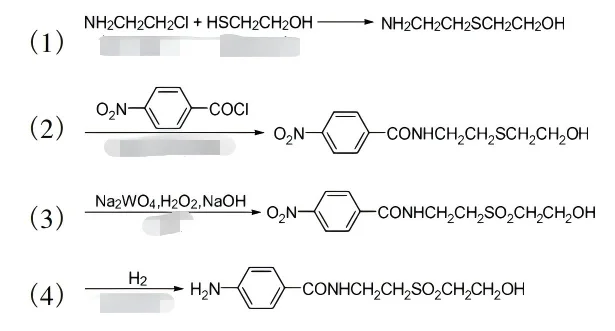

2.2 Synthesis of benzospiropyran
(1) Synthesize phenylhydrazine with methyl isopropyl ketone under acidic catalysis

(2) React compound (Ⅰ) with perchloric acid to obtain its perchlorate
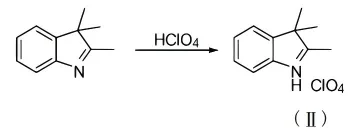
(3) React by dissolving compound (Ⅱ) in epichlorohydrin to produce the quaternary ammonium salt compound (Ⅲ)
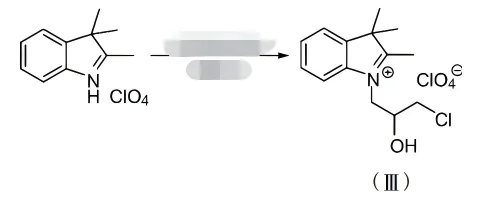
(4) React compound (Ⅲ) in ethanol with triethanolamine as a catalyst to produce benzospiropyran (Ⅳ)
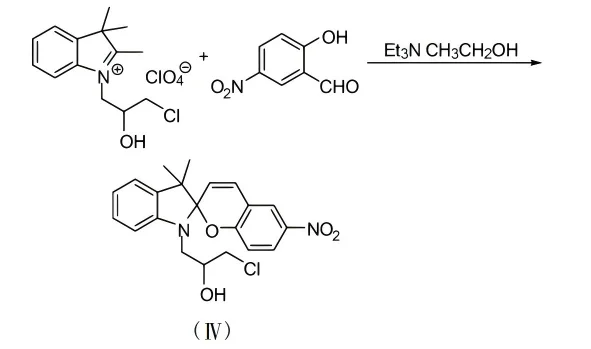
2.3 Preliminary exploration of synthesis of photochromic reactive dyes
Compound (Ⅳ) exhibits an UV absorption peak at 340 nm but shows no significant response to UV light under acidic or weakly alkaline conditions. However, when pH ≥ 12, in addition to the absorption peak at 340 nm, a new absorption peak appears at 420 nm. After irradiation with a 365 nm UV lamp, compound (Ⅳ) develops a new UV absorption peak at 542 nm. Simultaneously, the solution changes from colorless to pale red and emits fluorescence. After 28 min of UV irradiation, the UV absorption intensity no longer changes. 2 h after stopping the irradiation, the UV absorption at 542 nm disappears, and the solution returns to colorless. This indicates that compound (Ⅳ) possesses good photochromic properties and excellent reversibility. In view of the above, a vinylsulfonyl reactive group was introduced onto the photochromic compound (Ⅳ), thereby opening the prelude to photochromic reactive dyes and initiating a new chapter in reactive dye technology. A schematic representation of the synthesis exploration is shown below.

Exploration of photochromic pigments
Photochromic pigments mainly consist of bright pigments and photochromic compounds, and must be coated with inorganic protective materials.
3.1 Preparation of photochromic pigments
As described in a patent, 540 g of isocyanate, 120 g of ethyl acetate, 14.1 g of dimethylethanolamine, 210 g of ultraviolet absorber, 180 g of butyl acetate, and 42 g of a photochromic coloring material (Ⅴ) with the following structure are mixed together, ground, filtered, and then 1 kg of mica and 880 g of butyl acetate are added. The mixture is ultrafinely ground using a high-pressure homogenizer to produce a brightly colored pigment containing both photochromic material and mica.

3.2 Preparation of photochromic fluorescent pigments
According to patent disclosures, photochromic fluorescent pigments are composed of photochromic compounds and fluorescent pigments. These pigments offer a dual color effect: under normal light conditions, they display a bright color, while UV light irradiation, they produce a different color. An example is as follows: Mix 58.01 parts of diisononyl phthalate, 0.52 parts of photochromic compound (Ⅵ), and 41.47 parts of fluorescent pigment.
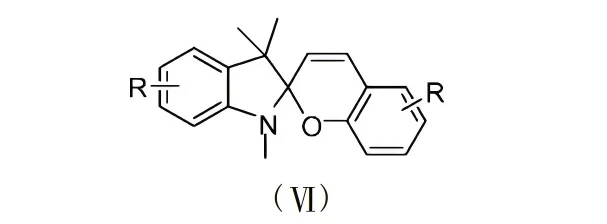
Here, R represents an alkyl group with 1 to 12 carbon atoms, and the ratio of photochromic compound to fluorescent pigment ranges from 1:200 to 1:10.
3.3 Preparation of photochromic inks
With the continuous R&D of photochromic compounds, photochromic inks for securities, confidential documents, and anti-counterfeiting prints have also evolved. The method involves adding an appropriate amount of photochromic compounds to printing inks to form photochromic inks, which can be applied in traditional printing processes. However, to ensure ink stability, an appropriate amount of stabilizers must be added to protect the photochromic compounds from oxidation, chemical reactions, radiation, and heat-induced activation. Currently, water-based inks for gravure printing, offset printing, screen printing, and other types of inks incorporating photochromic properties have been developed. It is particularly worth noting that, according to patent disclosures, photochromic printing inks utilize three types of photochromic materials labeled as A, B, and C, which are added to the printing inks as required or in different combinations. Among them, Type A includes photochromic compounds containing spiro-indolino-naphthoxazines, which undergo reactions fundamentally similar to those involving Type C photochromic compounds. It also includes spirobenzopyrans. Type B consists of fulgides and fulgimides. Type C includes spiro(1,8a)-dihydroindanes. An example is listed below:
Example 1: Dissolve 3 parts of Type A photochromic compound in 57 parts of cellulose acetate propionate, 20 parts of toluene, and 20 parts of ethanol. Heat the mixture to 60°C for 15 min, and then dry it at 80°C under reduced pressure until all solvents have evaporated. The resulting solid is crushed and ground to a fine powder with a particle size of 1-20 μm, which is then added to the following ink formulation: acrylic emulsion with 48% solids content (69%), acrylic emulsion with 49% solids content (6%), defoamer (0.02%), polyethylene wax (1.0%), isopropanol (7.98%), water (3%), and a solid solution of photochromic pigment in cellulose acetate propionate (13%). First, mix the two acrylic polymer emulsions with the defoamer, and then add the polyethylene wax and disperse the mixture in a ball mill for 10 min. Finally, blend the isopropanol, water, and photochromic pigment into the mixture. After printing this ink on paper and drying it, the colorless print turns blue under 366 nm wavelength irradiation. This ink can be used for gravure and flexographic printing.
Example 2: Yellow photochromic UV-cured offset printing ink: 20 parts of trimethylolpropane triacrylate (TMPTA), 56 parts of epoxy acrylate, 8.5 parts of precipitated calcium carbonate, 8 parts of yellow pigment, 4 parts of benzophenone, 5 parts of titanium dioxide, 2 parts of Michler’s ketone, 0.5 parts of stabilizer (hydroquinone), 1 part of photoinitiator, and 3 parts of Type A photochromic compound. First, mix 3 parts of Type A photochromic compound with 0.5 parts of stabilizer and gently heat to 40°C to obtain a clear solution. Then, add the other components and mix them using a three-roll mill. Print this ink using conventional methods and dry it. After drying and curing with UV radiation, the green color disappears, and the print appears yellow. However, upon exposure to the light at the wavelength of 366 nm, the print turns green again.
3.4 Exploration of photochromic organic pigments
Leveraging the reversible color-changing properties of photochromic compounds under different light sources, the research team led by Li Hongqi from Donghua University started by selecting photochromic compounds and using Pigment Bronze Red C produced by Zhejiang Qinyan Technology as the initial organic pigment. By adding appropriate amounts of antioxidant stabilizers, dispersants, etc., and thoroughly mixing and ultrafinely grinding the mixture with a high-pressure homogenizer, a red photochromic organic pigment was prepared. Preliminary experimental results have shown promise.
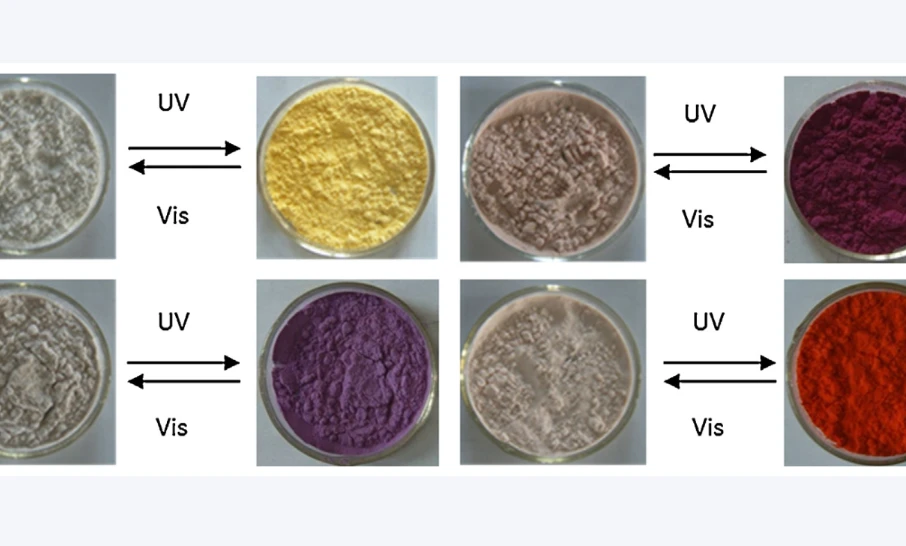
Conclusion and discussion
(1) Photochromic compounds have a wide range of applications and promising market prospects. They can be used not only in defense technologies but also in civilian applications. Among them, spiropyrans and fulgides are the R&D focus.
(2) The research on preparing photochromic dyes and pigments using photochromic compounds has just begun but shows great promise.
Photochromic pigments have been used in textiles, plastic products, etc., while photochromic inks have started to be used in securities, banknotes, and document anti-counterfeiting marks. The new 100-yuan RMB banknote just employs this technology.
(3) Research on photochromic reactive dyes and photochromic organic pigments has just started but made a good beginning. The basic approach to their development involves selecting suitable, non-toxic or low-toxicity photochromic compounds, and then choosing dyes or pigments suitable for the market, and adding appropriate additives according to the methods described earlier. Among these additives, stabilizers are crucial as they prevent the photochromic compounds from being eroded by air and other additives, thereby losing their activity.
(4) When preparing photochromic pigments and photochromic inks, the particles must be ground to below 1 μm; if the molecular particles of the photochromic compounds are large, they must be crushed. In addition to the ball mill and three-roll mill mentioned earlier, the author recommends using an ultra-high-pressure homogenizer specifically designed for the ultrafine grinding of dyes and pigments (with operating pressures up to 100–150 MPa, achieving nanometer-level particle sizes), which can achieve more efficient results.




1 thought on “How to use photoluminescent and photochromic compounds in dyes?”
Hello there, You have done an incredible job. I will definitely digg it and personally suggest to my friends. I’m sure they will be benefited from this site.